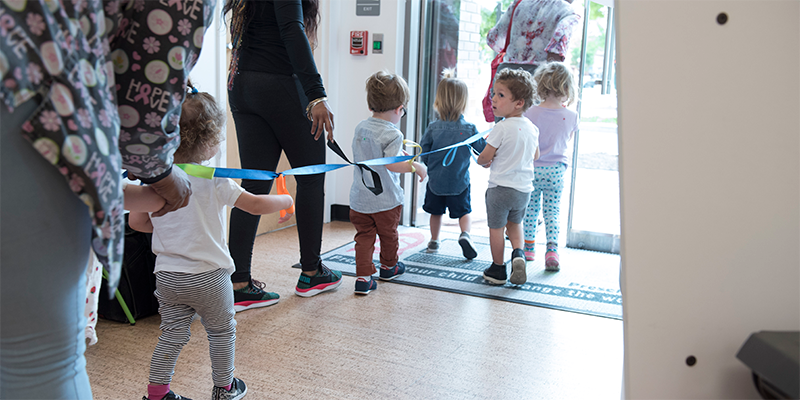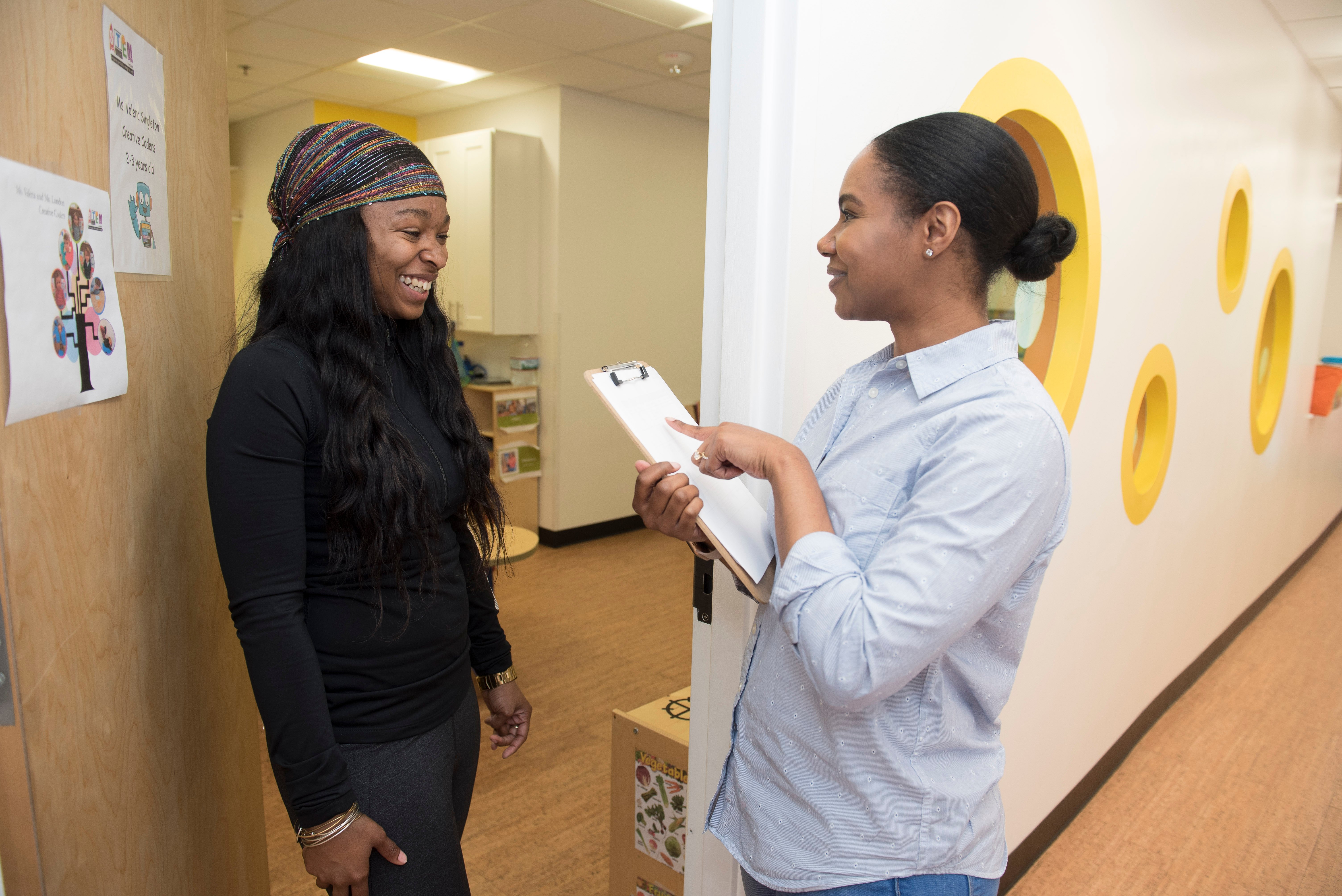Introduction
Caring for infants and toddlers is a big responsibility under "normal" conditions. However, when something unforeseen happens, such as a natural disaster or emergency event, caring for children becomes an even greater responsibility.
Infants and toddlers are especially vulnerable in emergencies, and helping them get to safety in emergencies requires extra planning and preparation. This is because children between birth and three have unique needs, such as:
- Reliance on caregivers for physical, nutritional, and emotional needs
- Communication limitations
- Limited mobility
- Need for safety and protection from harmful items
- Greater susceptibility to hazards, including chemicals and smoke
Infant Toddler Evacuation Survey
There has been little research focused on child care emergency preparedness for infants and toddlers, so in 2018 Child Care Aware® of America surveyed early learning professionals from across the United States, asking them to share information about how they evacuate infants and toddlers in their care. More than 2,200 child care providers participated in the survey.
Survey participants were asked to share information about how they prepare for emergencies, as well as their experiences with actual emergencies.
Evacuation is necessary when conditions are safer outside the building than inside the building.
Almost one in every five survey respondents said they have had to evacuate infants and toddlers in an emergency. While many emergencies were shared, the most common were fire, fire alarms, or smoke; gas leaks or gas smell; or severe weather.

Survey Findings
When comparing what worked well during an actual emergency evacuation to what works well during practice drills, there was a lot of similarity.
Child care providers can better prepare to care for infants and toddlers during and after emergencies by:
- Having a written plan and making sure everyone knows their role
- Performing regular practice drills
- Having a method to evacuate multiple children at once
- Having emergency supplies prepared and readily available
- Ensuring that adults stay calm
- Making sure there are enough adults to help with infants and toddlers
As expected, many challenges were shared. The challenges that were identified most often were:
- Unique needs of infants and toddlers, including communication and mobility needs
- Lack of preparation for the weather
- Lack of supplies/not enough supplies
- Scared or upset children
Survey participants also offered solutions to address the challenges.
- Ensure written emergency plans are updated to meet the constantly changing developmental needs of infants and toddlers
- Be sure you have a way to safely evacuate multiple children at once
- Determine a way to have children’s comfort items available
- Practice in all seasons/weather
- Ensure you have a way to protect children from all types of weather during an evacuation
- Be sure your evacuation method works in all weather
- Create or better stock an emergency supply kit
- Have a plan to safely take breast milk or formula
- Provide quiet activities to keep children entertained
- Speak to children in a calm voice
- Use simple terms to explain what is happening
- Sing songs to provide instruction and calm children
Call to Action
Child care providers are often faced with challenges, such as time and resource limitations. The survey helped us identify opportunities to address the challenges shared. CCR&Rs are in a unique position to meet the needs of child care providers when it comes to emergency preparedness.
CCR&Rs can help child care providers prepare to care for infants and toddlers during and after emergencies by:
- Providing emergency preparedness resources or support through training, technical assistance, videos, or webinars (topics include: best practice for evacuation, what type of drills should be practiced, etc.)
- Helping to identify resources for purchasing emergency preparedness materials, such as evacuation cribs and emergency kit supplies
- Establishing community partnerships that can support child care providers (e.g., emergency management, first responders, etc.)
- Participating in Child Care Aware® of America’s Emergency Preparedness Training of Trainers to learn more about preparing child care providers to plan for, respond to, and recover from disasters or emergencies.
Resources
Please check out the Child Care Aware® of America resources based on the insights child care providers who care for infants and toddlers every day shared with us.
- Evacuating with Infants and Toddlers Infographic: A quick look at evacuation supplies and practice drill preparation
- Considerations for Infant & Toddler Providers Infographic: A checklist to help child care providers think through all of the steps needed to be prepared in the event of an emergency
- Emergency Preparedness with Infants and Toddlers Infographic: A one-pager with specifics about infants and toddlers and details about infant toddler emergency preparedness
Child Care Aware® of America’s Emergency Preparedness team contributed to a recent issue of Domestic Preparedness Journal to share information about how emergency management and first responders can support emergency preparedness for infants and toddlers in child care, especially those in family child care. The article can be found here.
We hope you find these resources useful. The Emergency Preparedness Team at CCAoA is committed to providing resources like these tools to our members. However, we need your input. Please let us know if there are topics or concerns that you would like us to address. Feel free to reach out to us at preparedness@usa.childprepare.org.






